Bulbs
Flower Basics
Flower Beds & Specialty Gardens
Flower Garden
Garden Furniture
Garden Gnomes
Garden Seeds
Garden Sheds
Garden Statues
Garden Tools & Supplies
Gardening Basics
Green & Organic
Groundcovers & Vines
Growing Annuals
Growing Basil
Growing Beans
Growing Berries
Growing Blueberries
Growing Cactus
Growing Corn
Growing Cotton
Growing Edibles
Growing Flowers
Growing Garlic
Growing Grapes
Growing Grass
Growing Herbs
Growing Jasmine
Growing Mint
Growing Mushrooms
Orchids
Growing Peanuts
Growing Perennials
Growing Plants
Growing Rosemary
Growing Roses
Growing Strawberries
Growing Sunflowers
Growing Thyme
Growing Tomatoes
Growing Tulips
Growing Vegetables
Herb Basics
Herb Garden
Indoor Growing
Landscaping Basics
Landscaping Patios
Landscaping Plants
Landscaping Shrubs
Landscaping Trees
Landscaping Walks & Pathways
Lawn Basics
Lawn Maintenance
Lawn Mowers
Lawn Ornaments
Lawn Planting
Lawn Tools
Outdoor Growing
Overall Landscape Planning
Pests, Weeds & Problems
Plant Basics
Rock Garden
Rose Garden
Shrubs
Soil
Specialty Gardens
Trees
Vegetable Garden
Yard Maintenance
Salt-Tolerant Fruit Trees
Learn about fruits that tolerate brackish water, reclaimed water, salt spray and saline soils, including figs and pomegranates.
The increasing saline in the soil due to brackish ground water, use of recycled water or the proximity to the ocean is problematic when planting your personal orchard. Many trees are sensitive to salt and cannot tolerate saline soil or salt spray. The salts burn their sensitive roots and foliage. Despite the damage caused by salt, there are a few salt-tolerant fruit trees that you can add to your garden.
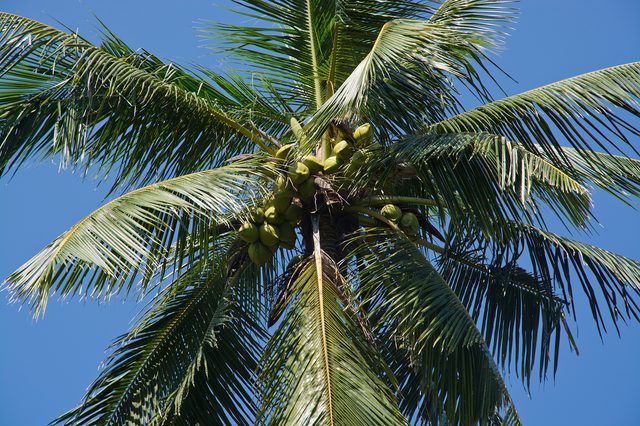
Coconut Palm
The coconut palm (Cocos nucifera) is one of the most salt-tolerant fruit trees that you can grow in the garden. Technically, the coconut is a drupe, which is a fruit with a hard outer covering over the seed. The coconut palm can only tolerate freezing temperatures for a few hours. It thrives in the warm temperatures of U.S. Department of Agriculture plant hardiness zones 10 through 11.
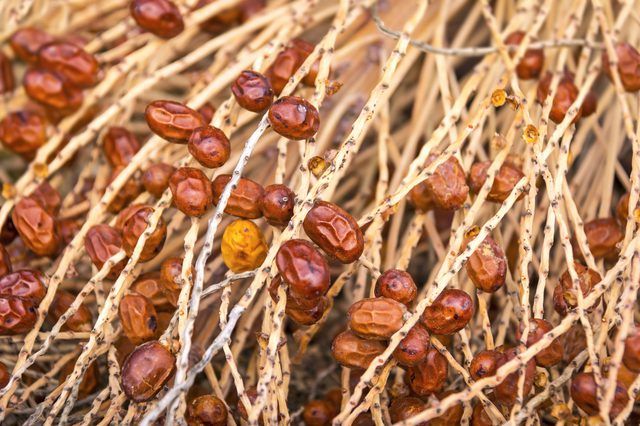
Date Palm
The true date palm (Phoenix dactylifera L.) is a drought-resistant, desert palm. Native to North Africa, the date palm is used for both its fruits and as a landscape plant in USDA zones 9 through 11. It has a high tolerance for salty soils and salt spray.
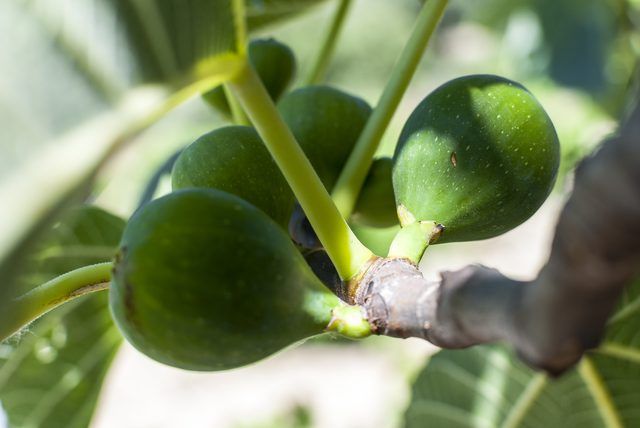
Fig
Cultivated for over 5,000 years, the fig (Ficus carica) is a native of the Mediterranean. Figs tolerate drought, saline soils and salt spray and can be grown in coastal regions. Most figs thrive in USDA zones 8 through 10. While the fig may freeze to the roots, it quickly resprouts in spring, producing a crop of figs on the new growth.
Warning
The leaves and milky sap of fig trees can cause an allergic reaction in sensitive individuals. Wear protective gear, such as safety glasses, gloves, long pants and a long-sleeved shirt when working around the tree.
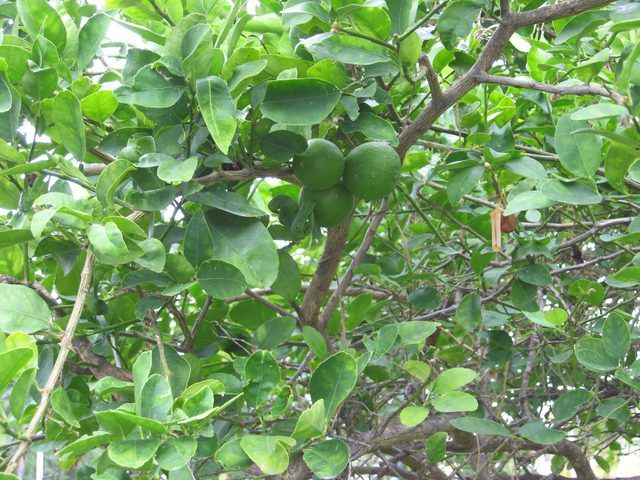
Key Lime
The Key lime (Citrus aurantiifolia), also known as the Mexican lime and West Indies lime, provides the tart limes for sweet treats, such as Key lime pie. Native to Southeast Asia, it thrives in USDA zones 9 through 11. It is moderately tolerant of salty soils and salt spray.
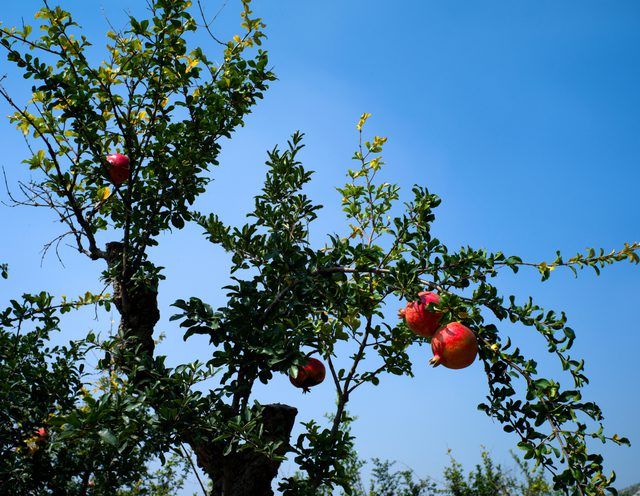
Pomegranate
Grown in Bermuda, Israel, California and other warm climates, the pomegranate (Punica granatum) requires regular irrigation to fruit. In Israel, the shrubby trees are regularly watered with brackish water. Gardeners in USDA zones 8 through 11 can plant the 6- to 15-foot-tall tree near a doorway or in a courtyard garden, where they can enjoy the flowers and fruits.

Pummelo
The large heavy fruits of the pummelo (Citrus maxima) are a treat in China and Southeast Asia. The thick rind is candied, while the fruits are enjoyed fresh. Its native habitat is in Polynesia and the Malay Peninsula. It thrives in USDA zones 9 through 10. It tolerates brackish water, such as reclaimed water, and poor drainage.